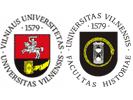| of a second front in Europe was being debated, the Balkans were mentioned as a likely place, but the arguments in favour were more political than military. For the Soviets, the opening of a second front was to be the prelude to final military operations, during which the strategy for shaping postwar Europe would have to be decided upon. However, for each member of the Alliance it was clear that any hasty step might have caused new rifts among the allies, especially between London and Moscow. In view of this fact, one can amply understand the complexity of CPY–Soviet relations during the war years.
The CPY–USSR relationships were carried out by The Executive Committee of the Comintern. The direct link between the CPY and the Comintern was the secret radio connection between Josip Broz Tito (appointed by Stalin as General Secretary of the CPY in 1937), and George Dimitrov, the General Secretary of the Comintern. On the other hand, relations between the USSR and the Yugoslav government-in-exile were officially conducted by legations1.
Relations between the CPY and the Soviet Union during the Second World War developed gradually. They started with the supply of military and medical materials for the Yugoslav People’s Liberation Army, led by the Yugoslav communists, and continued in direct military cooperation in 1944–1945. The main purpose of this Soviet support was to ensure the success of the CPY in taking power and introducing socialism in Yugoslavia. The fundamental aim of Moscow’s Yugoslav policy, i. e. its support of Tito’s partisans and his CPY, was to bring socialist Yugoslavia into the post-war Central-Southeastern European community of Pax Sovietica controlled and governed by the USSR. For that reason, although the other members of the Alliance, the USA and the UK, supported both Tito’s partisans (communist forces) and Dra˛a Mihailovię’s četniks (royal forces), the Soviet Union supported only the Yugoslav communists and their People’s Liberation Army, especially during the final stage of the war. Even though a second front was not opened in the Balkans, the final operations could not bypass this part of Europe since the local people, particularly from Yugoslavia, had been fighting there from 1941. The Soviet Red Army made use of the Yugoslav resistance movement under communist leadership and during the last eight months of the war succeeded through military co-operation to put Yugoslavia under its own political protectorate. It should be said that for Moscow, the Yugoslav resistance movement and armed fighting led by Tito had more political than military significance. In a new guise and in new historical circumstances, Central-Southeastern Europe once more found itself directly in the sphere of the conflicting interests of the Great Powers. Throughout the war, the allies clashed in their Central European and Balkan policies and in their attempts to influence the national liberation struggles within this portion of Europe. The members of the Alliance were convinced that they could resolve matters by striking bargains among themselves. The result of this conviction was the division or “tragedy” of Central and Southeastern Europe designed in Teheran and confirmed in Yalta and Potsdam2.
Relations between the CPY and the Soviet Union from 1941 to 1945 are variously explained in Yugoslav and Soviet historiography.
__________________________________________
1 N. Popović. Jugoslovensko-sovjetski odnosi u drugom svetskom ratu (1941–1945). Beograd, 1988. S. 7; B. Petranović. Srbija u drugom svetskom ratu 1939–1945. Beograd, 1992. S. 622–632.
2 M. Kundera. The Tragedy of Central Europe // New York Review of Books. New York, 1984. P. 33–38. |


 dizainas ir programavimas giriaus
dizainas ir programavimas giriaus  dizainas ir programavimas giriaus
dizainas ir programavimas giriaus